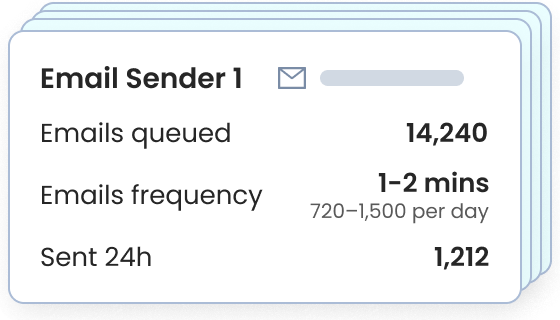Reach more inboxes and avoid the spam folder


Robb LeCount, VP of Operations, The Rich Dad Company

Why do you need an email warmup tool?

Reach More Customers

Build Trust with ESPs

Protect Sender Reputation
How does our automated email warmup work?
Step 1.
Slowly ramp up your email sends
Sending mass emails from a new address risks triggering spam filters and damaging your sender reputation.
Customers.ai helps you build that trust by slowly ramping up send volume from your new addresses.
This includes sending emails to reputable inboxes to start triggering natural engagement.


Step 2.
Build your sender reputation
As your warming emails start to see engagement (opens, replies, clicks, and more), your sender reputation starts to build.
The more positive engagement and interactions you have, the more likely the ESPs are to direct your message to the primary inbox.
Step 3.
Scale your email marketing campaigns
More engagement and a better reputation mean better deliverability. With a trusted sender reputation, you can ramp up your send volume and scale your campaigns.

Improve deliverability and get your message into the hands of your audience with Customers.ai proprietary email technology.



Ensure emails hit the inbox with our proprietary email deliverability technology

